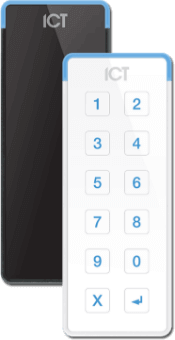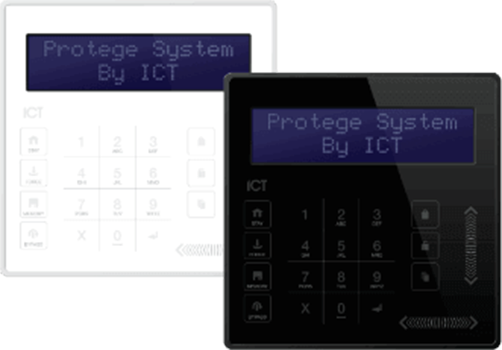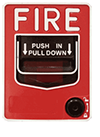Video MGMT System
 Access Control
Access Control
Voice & Data Wiring
 Burglar Alarm
Burglar Alarm
 Fire Alarm
Fire Alarm
Video MGMT System
Voice & Data Wiring
THOUGHT CENTER > Blog > Access Controls
November 10, 2023
Too busy to read? Here’s a summary:
Role-Based Access Control (RBAC) has been a game-changer in the world of business security. It's not just about keeping the bad guys out; it's about ensuring that the right people have access to the resources they need.
Think of it as a VIP pass at a concert. Not everyone gets backstage access, right?
Similarly, with RBAC, only some get the same access to all areas of your facility.
Keep on reading to explore the world of RBAC and how it can enhance physical security and operational efficiency at your site.
Role-based access control refers to an access control system that restricts access to certain areas or resources based on a user's role or function within an organization.
Whether it's ensuring top-notch security, streamlining operations, or staying ahead of regulatory requirements, RBAC has business security covered.
In fact, according to Allied Market Research, the global role-based access control market was valued at a staggering $8.3 billion in 2022, underscoring its significance in today's security landscape.
Limiting Access Based on Roles
At the heart of RBAC is the principle of granting access based on roles within an organization. This ensures that sensitive information is only accessible to those who genuinely require it for their job functions.
For example, while a financial analyst might need access to a company's financial data, a marketing executive might not.
Reducing Administrative Errors
Human error is a significant factor in security breaches. By simplifying the process for programming privileges, RBAC minimizes the chances of mistakes.
Instead of individually assigning permissions to each user, administrators can assign roles. This reduces the workload for administrators and reduces opportunities for errors and oversights.
Streamlined Access Management
Gone are the days of manually adjusting permissions for every new employee or when someone changes roles. With RBAC, it's as simple as assigning a predefined role to a user. The system automatically knows what access to grant based on that role. RBAC saves time and ensures consistency.
Reduced Administrative Overhead
Imagine having to set permissions for hundreds or even thousands of employees individually. It's more than just time-consuming; it's a logistical nightmare.
RBAC eliminates this hassle. With roles pre-defined, onboarding new employees or transitioning existing ones becomes a breeze.
Flexibility and Scalability
As businesses evolve, so do their security needs.
RBAC systems are flexible. Adding new roles or modifying existing ones can be done without overhauling the entire system.
This scalability ensures that the system remains efficient even as your organization expands.
Meeting Industry Standards
Many industries, especially those dealing with sensitive financial and healthcare data, have stringent regulations about data access. Non-compliance can result in fines and a tarnished reputation.
RBAC systems are designed with these regulations in mind, ensuring that only authorized personnel have access to sensitive areas and resources.
Audit Readiness
With regulatory bodies becoming more vigilant, audits can happen anytime. RBAC systems maintain detailed logs of who accessed what and when. This not only aids in detecting any unauthorized access but also ensures that businesses are always audit-ready.
Proactive Compliance Management
Instead of scrambling to meet compliance standards after a regulation is enacted, RBAC allows businesses to be proactive.
By setting up roles that align with industry regulations, businesses can ensure they remain compliant even as new regulations come into play.
Define Clear Roles: Before you can implement RBAC, you need to have a clear understanding of the roles within your organization. Who needs access to what?
Principle of Least Privilege: Always provide the minimum level of access required for a role. If someone doesn't need access to financial data, don't give it to them.
Regular Audits: Regularly review and audit user roles and permissions. Roles can change, and it's essential to keep your access controls up to date.
If you're thinking, "This sounds great, but how do I get started?" - don't fret!
Mammoth Security is Connecticut’s one-stop shop for all things security. From video surveillance systems to fire alarms, burglar alarms, access control systems, and even structured cabling, we've got you covered.
Our team has the knowledge and experience to guide you through the intricacies of your security system options. So, if you're ready to take security to the next level (and enjoy a free on-site survey and consultation while you’re at it!), click to contact Mammoth Security and fill out the brief form today.
NOT COMPLETELY SURE?
860-748-4292In the realm of business security, Role-Based Access Control (RBAC) is an access control system that restricts access to specific areas and resources based on a user's role or function within an organization.
Role-based access control (RBAC) enhances business security by ensuring that only the right individuals, based on their roles, have access to specific resources. RBAC reduces the risk of unauthorized access.
RBAC is deemed a game-changer because it not only bolsters security but also streamlines operational efficiency, ensuring that the right people have access to the resources they need without manual interventions.
RBAC aids in regulatory compliance by setting up roles aligned with industry regulations, ensuring that only authorized personnel access sensitive data, and maintaining detailed logs for audit readiness.
RBAC stands for role-based access control.